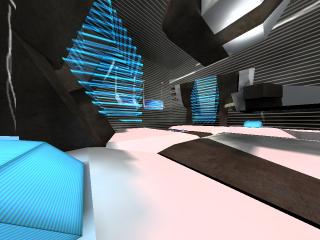
Gaming environments like Quake and Unreal have become easy interactive 3D development environments. Modify the game maps and objects, and you can make the visual realm in these games whatever you want. But for digital musicians imagining a 3D environment for creating music and sound, they’re limited.
Enter the latest project from fijuu2 creator Julian Oliver, together with Steven Pickles. They wanted powerful synthesis capabilities, which is something you’re unlikely ever to get in a game like Quake III. So, they found a way to send network data from Quake into the free software Pd, using Pd’s netsend object to send UDP packets containing control data from the game. In other words, instead of using a MIDI controller, you can make the game your control instrument. netsend is in Max/MSP, too, so this should work for Max, as well.
You’ll need two machines for this to work right, but the objects are freely available from Julian and Steven; follow the download link on the project page:
I’ve been following progress on Julian’s blog; it’s a good read. For more on the work, here’s our friend Chris at Pixelsumo:
. . . and to see it in action, Julian posts a video:
q3apd in gorgeous OGG video glory
For Pd fans, Steven has a goodie of his own: an abstraction that fakes poly~ from Max/MSP inside Pd, plus some other objects.
Given the ready availability of map editors and such (at least if you have access to Windows), I expect you’ll see more projects like this. We’ve seen work before, certainly, that creates art inside the game engines, but by linking to real synthesis libraries you can do more than just mix pre-rendered sound sources. Speaking of which, any other readers experimenting with game engines? Let us know. And feel free to share in our gaming forum.